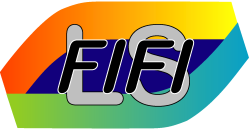


|

|
|
|
FIFI LS Detector Development |
NEW Red Detector Images!!!!Why we use Gallium doped Germanium (Ge:Ga)Our main science goals require that we optimize observing time and one of the ways we will accomplish this, is to simultaneously observe in two of the important far-infrared bands (see our design criteria). We find that best detector material to detect radiation at these wavelengths is Gallium doped Germanium. In the below figure the standard responsivity of the material is shown from 45-110 microns and by stressing the material a longer wavelength response of 110 - 210 microns is obtained. 
The ChallengeThe biggest challenge for us has been how to properly stress such a large array such that all of the 16 pixels are equally stressed, therefore having similar responsivity. The below image shows the detectors from our old instrument (FIFI) on the right in comparison to what is now needed for FIFI-LS on the left.
Our SolutionWe have solved the problem of uniform stressing by developing a stressing mechanism which stresses each column independently and a detector housing (in the figure below middle image) which uniformly applies stress along the right side and the ball-and-socket mechanism (upper left) for centering the stress on each detector pixel. In addition, the middle image on top shows the light cones that uniformly fill the filed of view.
In the photographs below, we show the finished assembly of the first complete detector stack. 

Our ResultsThe effect of the total stress on the resistance of 5 detectors in the first stack is shown in the below image. Since the stress is applied uniformly throughout the stack, R1 (the resistance of detector 1) varies like R15 (the resistance of detector 15). This shows that our implementation of stress is working very uniformly.
|